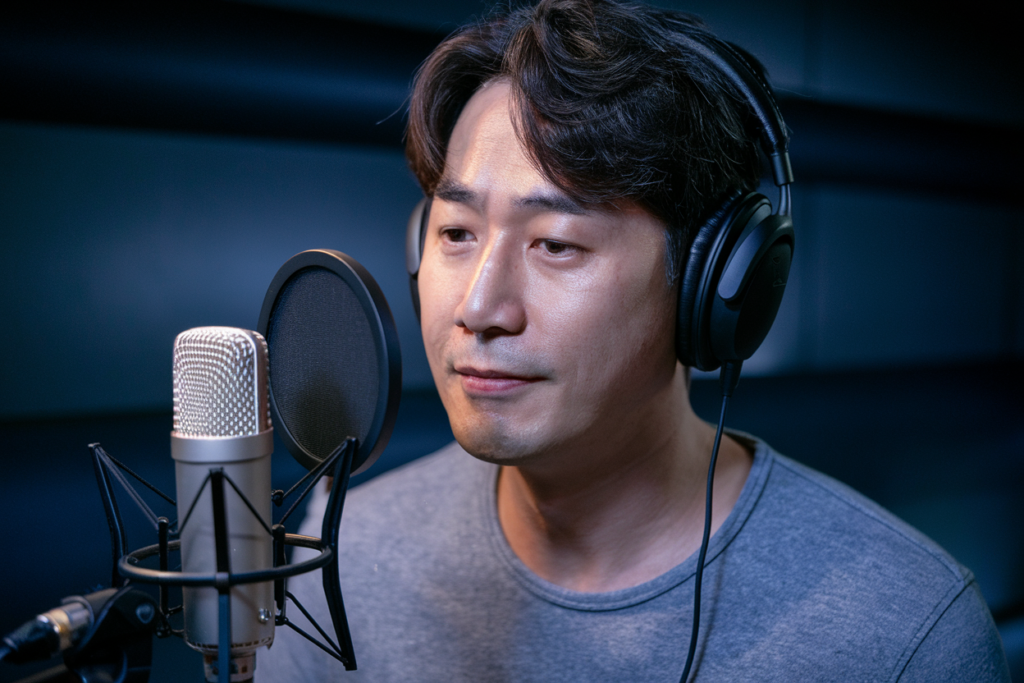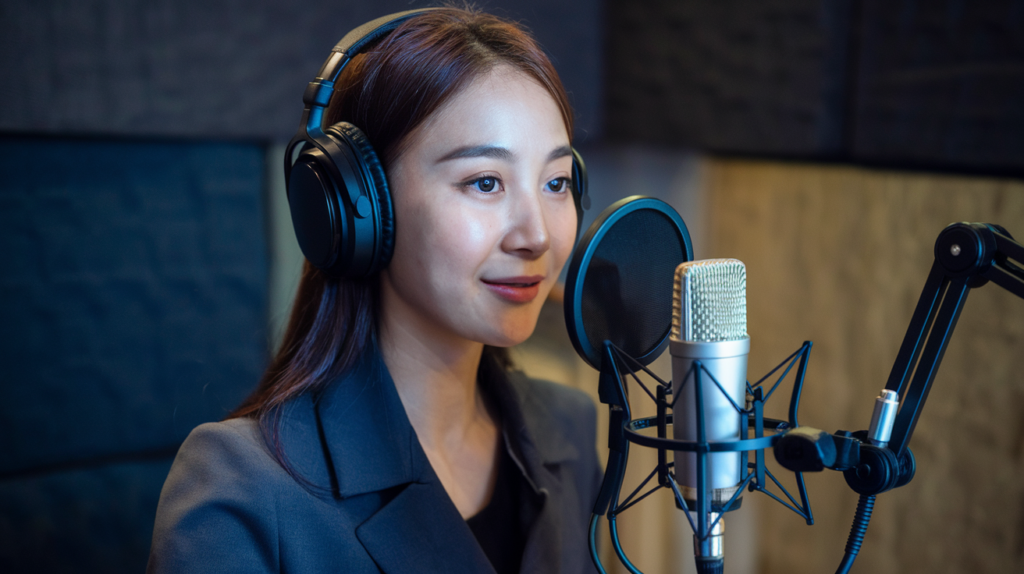Key Takeaways
- Diverse Regional Accents: Korean features a variety of regional accents, including the Seoul, Gyeongsang, Jeolla, Chungcheong, and Gangwon dialects, each with unique characteristics that enrich the language.
- Impact on Media: Understanding these accents enhances appreciation for K-drama characters as voice actors utilize specific dialects to convey authenticity and emotional depth in performances.
- Pronunciation Variations: Different regions exhibit distinct pronunciation styles; for example, the Seoul accent is clear and precise while the Gyeongsang accent has a more abrupt tone.
- Cultural Significance: Each regional accent reflects local culture and social nuances that influence communication dynamics among speakers in different areas of Korea.
- Language Learning Challenges: For learners of Korean, familiarity with various dialects aids comprehension and fluency, making interactions with native speakers more effective.
- Emotional Resonance: The unique intonation patterns found in regional accents contribute significantly to storytelling in media forms like films and music by enhancing character development and audience engagement.
Ever wondered why your favorite K-drama characters sound so different from one another? The answer lies in the fascinating world of regional accent differences in Korean. Just like any language, Korean has a rich tapestry of dialects that reflect the diverse culture and history of its speakers.
Overview of Regional Accents in Korean
Korean features a rich tapestry of regional accents, each adding unique flavor to the language. These accents vary significantly across different areas, impacting pronunciation, intonation, and vocabulary. Understanding these differences enhances your appreciation for Korean culture and its representation in media.
The most prominent dialects include:
- Seoul Dialect: This is considered the standard accent. It’s what you typically hear in K-dramas and news broadcasts. The Seoul dialect emphasizes clarity and precision.
- Gyeongsang Dialect: Spoken in cities like Busan and Daegu, this dialect has a distinct tone that can sound more abrupt than others. Its unique pitch patterns often catch listeners’ attention.
- Jeolla Dialect: Originating from the southwestern region, Jeolla boasts softer pronunciations with varied vowel sounds. This dialect reflects warmth and friendliness, making it quite appealing.
- Chungcheong Dialect: Known for its slower speech rhythm and relaxed intonation, this dialect comes from central Korea. It often features a sing-song quality that sets it apart from others.
- Gangwon Dialect: This northern accent is characterized by its nasal sounds and unique expressions. It’s less common in mainstream media but holds cultural significance.
These regional variations also influence how voice actors portray characters on screen or in audio productions. A character’s background can shape their speech patterns, enhancing authenticity when delivering lines or narrating stories.
Exploring these accents not only enriches your understanding of the language but also deepens your connection to Korean arts like film and music. When you listen closely to various voices—whether it’s an emotional scene or a lighthearted moment—you’ll notice how much a regional accent contributes to mood and character development.
Major Regional Accents
Korean regional accents showcase the rich diversity of the language, each contributing unique characteristics. Understanding these accents can enhance your appreciation for K-drama characters and deepen your connection to Korean culture.
Seoul Accent
The Seoul accent serves as the standard for media and education in South Korea. Known for its clarity, this accent features a relatively neutral tone that makes it widely recognizable. You’ll often hear this accent in K-dramas, where voice actors use it to portray urban characters. Its straightforward pronunciation helps convey emotions effectively, making it a favorite among voiceover artists aiming for versatility.
Busan Accent
The Busan accent stands out due to its distinct intonation and abrupt tones. This accent is known for conveying warmth and friendliness, which can make characters feel more relatable. Voice talents often enjoy using this accent because it adds depth and authenticity to character portrayals from southeastern regions of Korea. If you listen closely during voiceovers or audio productions featuring this dialect, you’ll notice how it enhances storytelling through emotional resonance.
Jeolla Accent
The Jeolla accent is characterized by softer pronunciations and melodic intonations. This gentle approach creates an inviting atmosphere, perfect for nurturing or heartfelt narratives. When voice actors adopt this dialect in their performances, they tap into a cultural richness that resonates with audiences on a deeper level. The subtle nuances found in Jeolla’s speech patterns can elevate any project’s emotional impact, making this accent valuable in various forms of media.
Each regional accent adds its flavor to the Korean language landscape while enriching character development in dramas and other audio projects. Understanding these differences not only boosts your knowledge but also enhances audience engagement through authentic representation.
Key Features of Regional Accent Differences
Understanding regional accent differences in Korean reveals intriguing characteristics that enrich the language. Each accent provides unique nuances, influencing communication and cultural identity across various regions.
Pronunciation Variations
Korean pronunciation varies significantly among regions. For example, the Seoul dialect is known for its clear enunciation, while the Gyeongsang dialect features a more abrupt delivery. The Jeolla dialect often employs softer sounds, making conversations feel gentler and more inviting. In contrast, the Chungcheong dialect adopts a slower rhythm, allowing for easier comprehension but sometimes perceived as less energetic. Each variation not only reflects local culture but also affects how voice actors convey emotions in their performances.
Vocabulary Distinctions
Regional accents also introduce vocabulary distinctions that can surprise listeners. Certain terms may appear exclusive to specific areas; thus, understanding these variations adds depth to your appreciation of Korean media. For instance, some expressions common in Busan might not resonate with speakers from Seoul or Jeolla. Voice artists must navigate these lexical differences to deliver authentic portrayals of characters hailing from diverse backgrounds in K-dramas or other audio productions.
Recognizing these key features enhances your understanding of why accents matter so much in storytelling and representation within Korean culture.
Influence of Regional Accents on Communication
Regional accents play a significant role in how communication unfolds within Korean culture. They shape not only the way language is spoken but also how it’s perceived by listeners.
Social Perceptions
Social perceptions of regional accents can greatly influence interpersonal interactions. For instance, individuals from Seoul often receive recognition for their clear enunciation, which many view as more formal or educated. In contrast, the Busan accent—known for its warmth—can foster feelings of familiarity and approachability among speakers from southeastern Korea. The Jeolla dialect’s softer tones create an inviting atmosphere that encourages open dialogue. These social cues impact relationships and can even affect business discussions, highlighting the importance of understanding varying accents in professional settings.
Language Learning Implications
Language learners encounter distinct challenges due to these regional differences. Students may find themselves struggling with vocabulary or pronunciation that varies between dialects, leading to confusion during conversations with native speakers. Familiarity with different accents enhances comprehension skills and boosts confidence when communicating across regions. Engaging with various voice talents who specialize in specific dialects helps learners grasp nuances effectively while improving their listening skills and overall fluency in Korean.
Understanding these influences enriches your appreciation for Korean media, especially K-dramas where each character’s voice adds depth to storytelling through unique accent features. Embracing these variations elevates your connection with the language and culture while enhancing effective communication strategies in any context involving Korean interactions.
Conclusion
Exploring regional accent differences in Korean reveals a rich tapestry of cultural nuances that enhance storytelling. Each dialect offers unique characteristics that breathe life into K-drama characters, making them relatable and authentic.
Understanding these accents not only deepens your appreciation for Korean media but also enriches your communication skills. By familiarizing yourself with various pronunciations and vocabulary, you’ll navigate conversations more confidently.
Whether you’re a language learner or a K-drama fan, embracing these regional variations can transform how you connect with the language and its culture. So dive into the diverse world of Korean accents and let it elevate your experience.
Frequently Asked Questions
What are the main regional accents in Korean?
The main regional accents in Korean include the Seoul dialect, Gyeongsang dialect, Jeolla dialect, Chungcheong dialect, and Gangwon dialect. Each has unique characteristics that influence communication styles and cultural identity.
How do regional accents enhance K-drama characters?
Regional accents add authenticity to K-drama characters by reflecting their backgrounds. For example, the Busan accent conveys warmth, while the Jeolla accent offers a softer tone, enriching storytelling and character development.
Why is the Seoul dialect considered standard in media?
The Seoul dialect is seen as standard because of its clarity and neutrality. It is widely recognized across Korea and effectively conveys emotions in various forms of media.
How do pronunciation variations affect communication?
Pronunciation variations can significantly impact understanding and perception in conversation. Accents like Gyeongsang’s abrupt delivery or Chungcheong’s slower rhythm influence how messages are received culturally.
What challenges do language learners face with Korean accents?
Language learners may struggle with vocabulary differences and pronunciation variations among regions. Familiarity with these differences enhances comprehension but can lead to confusion without proper exposure or guidance.
How can voice talents help with learning Korean accents?
Engaging with voice talents specializing in specific Korean dialects helps learners grasp nuances in pronunciation and intonation. This practice improves listening skills, fluency, and overall confidence when communicating.
Why are soft tones important in certain Korean dialects?
Soft tones found in dialects like Jeolla create a more inviting atmosphere for conversation. They encourage open dialogue and foster better interpersonal relationships within both personal and professional contexts.







